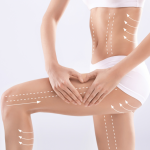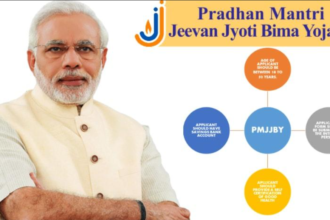You’re at dinner. The lighting is moody. The menu is… blurry? You stretch your arms, squint, tilt your head like a confused pigeon, and finally give up and hand the menu to someone younger.
Welcome to presbyopia—the natural, unavoidable condition that hits most people in their 40s and 50s. It happens when the lens of your eye becomes less flexible, making it harder to focus on things up close. It’s not a disease, just age doing its thing.
But here’s the good news: today’s presbyopia treatment options aren’t one-size-fits-all. Whether you’re tech-savvy, fashion-forward, fitness-obsessed, or just don’t want to carry around five pairs of readers, there’s a solution that fits your lifestyle.
Let’s break it down.
Glasses: The Tried-and-True Standby
Who it’s for:
- Readers: Anyone who doesn’t mind a little on-again, off-again eyewear.
- Bifocals/Progressives: Great for multitaskers who want seamless vision correction.
Pros:
- Affordable, non-invasive, widely available.
- Tons of style choices (if that’s your thing).
Cons:
- Easy to lose or break.
- Can fog up, fall off during workouts, or just feel like a hassle.
Lifestyle fit:Great for people who don’t mind accessories—or who love collecting them.
Contact Lenses: Clear Vision, No Frames Attached
Who it’s for:People who want freedom from glasses but aren’t ready for surgery.
Options include:
- Monovision (one eye for near, one for distance)
- Multifocal lenses
- Daily or extended wear
Pros:
- Discreet and convenient once you get used to them.
- Won’t interfere with sports, style, or selfies.
Cons:
- Not everyone adjusts well to monovision.
- Requires careful hygiene and regular replacement.
Lifestyle fit:Perfect for active individuals or those who simply don’t vibe with glasses.
Eye Drops: The Drop-and-Go Fix
Who it’s for:
People who want a non-invasive, glasses-free option for near vision—without the commitment of contacts or surgery.
How it works:Drops use pupil-shrinking compounds to improve depth of focus. You literally drop better vision into your eyes.
Pros:
- No eyewear or lenses required.
- Can work within 15 minutes and last up to 6 hours.
- Safe and FDA-approved options are available.
Cons:
- Not permanent—requires daily use.
- May reduce low-light vision temporarily.
Lifestyle fit:Ideal for people on the go, social butterflies, and anyone who wants sharp vision without “wearing” anything.
Laser Surgery: Permanent but Precise
Who it’s for:Those ready to invest in a longer-term solution and who don’t mind a little downtime.
Options include:
- Monovision LASIK
- Corneal inlays
- PresbyLASIK
Pros:
- Can significantly reduce or eliminate the need for glasses.
- One-time procedure with lasting results.
Cons:
- Not reversible.
- Costs more upfront and involves surgical risk.
- Not everyone is a candidate.
Lifestyle fit:Best for professionals or travelers who want minimal maintenance—and maximum freedom.
Lens Implants: Surgery for the Long Haul
Who it’s for:People with both presbyopia and cataracts—or those seeking the most permanent correction available.
Pros:
- Great for severe or complex vision needs.
- Often bundled with cataract surgery.
Cons:
- Invasive and requires recovery time.
- More expensive than other options.
Lifestyle fit:A fit for those planning long-term vision care with their ophthalmologist—especially if cataracts are part of the picture.
So… What’s Right for You?
Ask yourself:
- Do I need to read things clearly all day, or just occasionally?
- Am I comfortable with glasses, or do they drive me nuts?
- Do I want a temporary fix—or am I ready for a long-term solution?
- How much convenience (or lack of maintenance) matters to me?
There’s no “best” presbyopia treatment—just the one that fits your life.
Final Thought: It’s Not About Age—It’s About Choice
Presbyopia isn’t a flaw. It’s a normal part of aging, like grey hair or not understanding TikTok. But how you deal with it? That’s completely up to you.
Whether you want the flexibility of drops, the ease of glasses, or the freedom of surgery, you’ve got options—and more than ever before.
Because your vision should fit your lifestyle—not the other way around.














